The character of Billy Bunter may be controversial for some today, but his popularity seems undimmed. A look back at his comic career…
Here’s an entertaining “Billy Bunter” page sold on the Catawiki auction site recently, the “of its time” tale featuring art by Reg Parlett, first published in Valiant in 1968. The art is dated 27th April 1968.
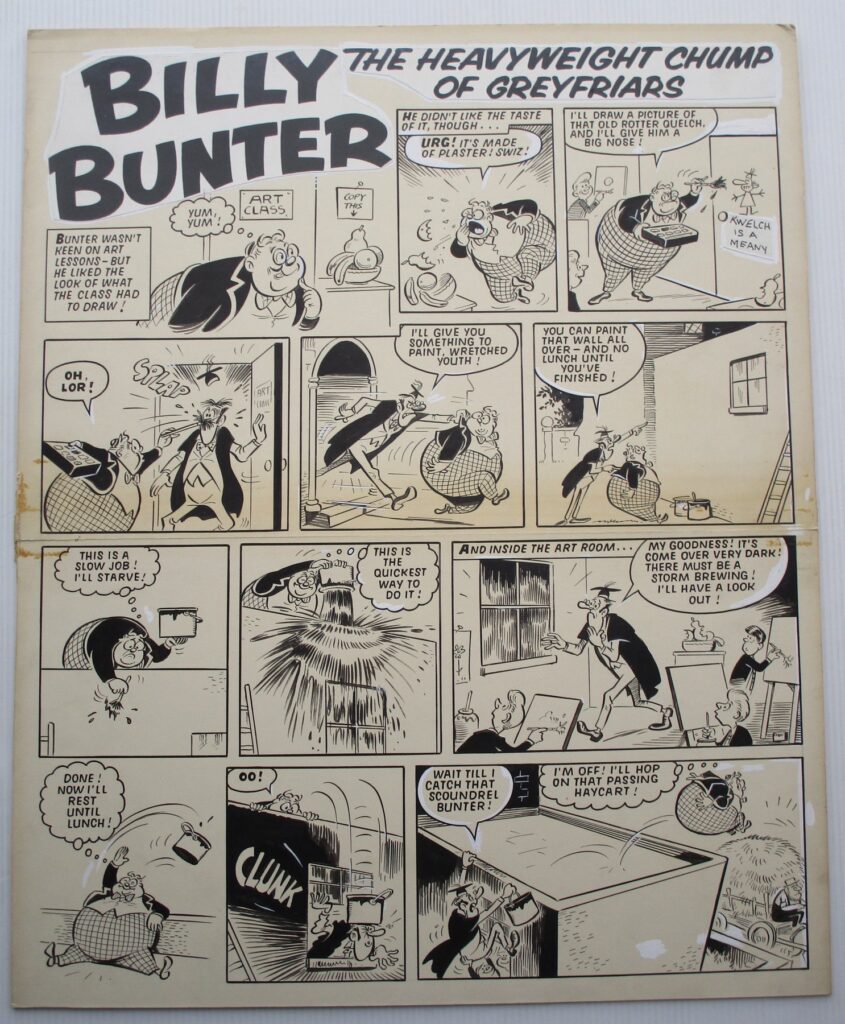
Catawiki is well worth keeping an eye on for British comic art, although be warned some sellers occasionally do not ship to UK post Brexit.
British comic art was often shipped to Europe to publishers looking to reprint strips, thus surviving purges of archives here by companies like IPC and Egmont. (Luckily, some items consigned to fiery oblivion by penny pinching artless idiots of higher management were saved by some editors and others, who caught wind of the plans).
From 1955, Billy Bunter comic strips were published in the Netherlands, in the Dutch-language comic Sjors, the character renamed “Billie Turf”. Fast becoming a success, just as he was in Britain, Bunter continued appearing in anthology-style collections in Dutch until the end of the 20th century. “Billie Turf” comic strip albums were also published from 1963 onwards, and have continued into the 21st century.

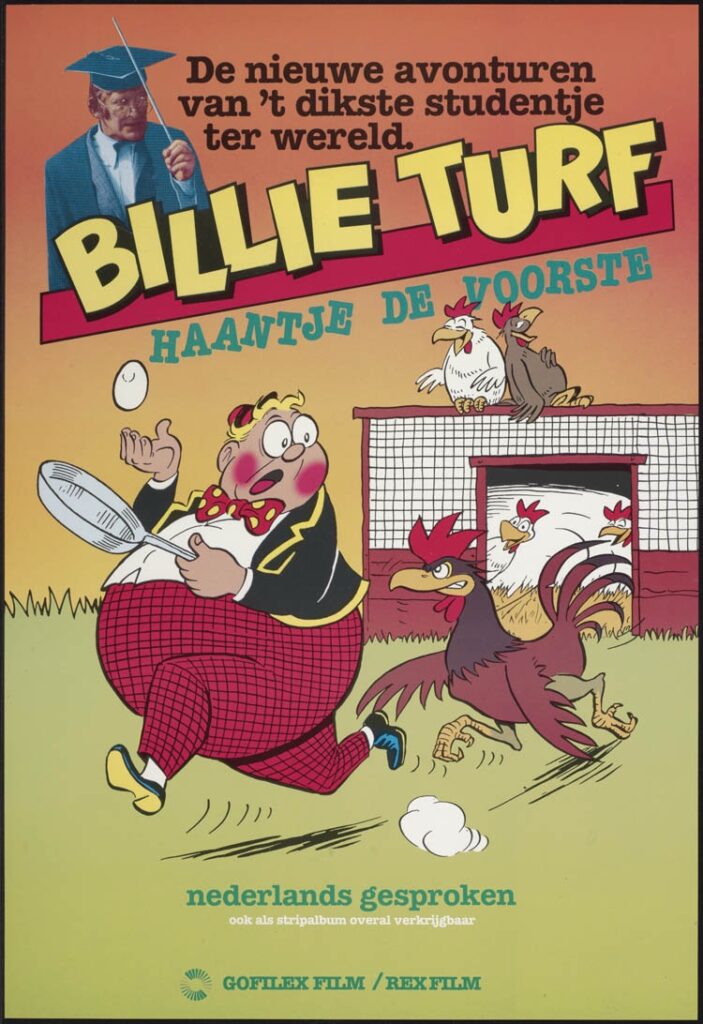
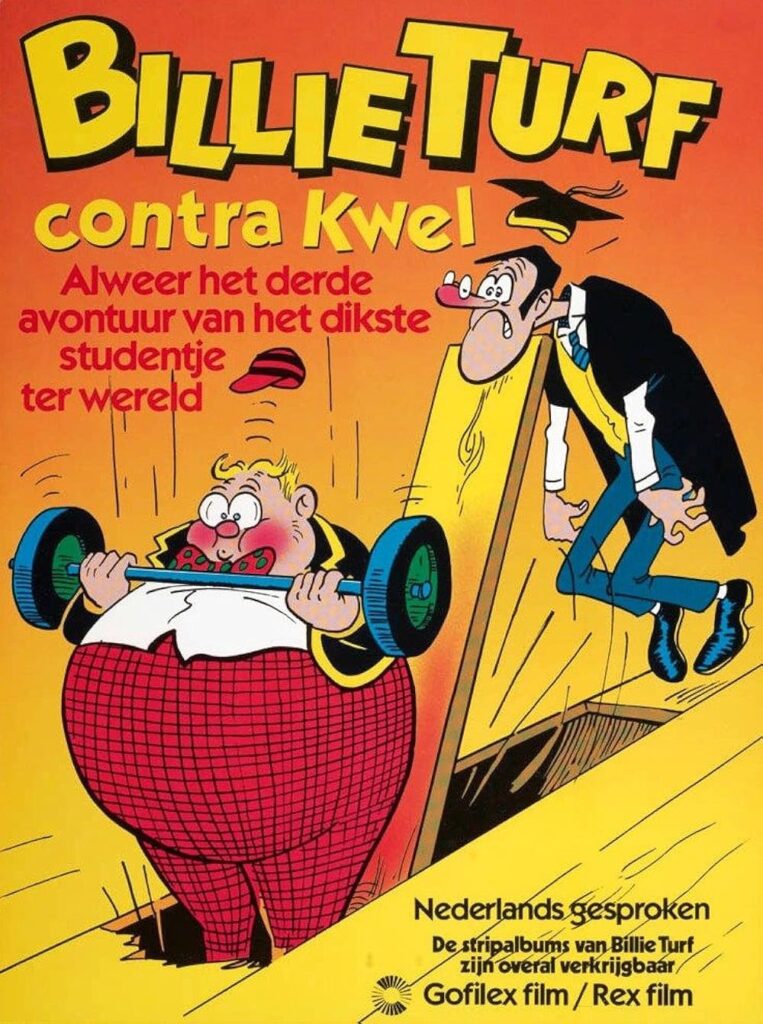
Three Billie Turf movies were made by Henk van der Linden between 1978 and 1983, mostly spelling the name of the main character as “Billy Turf”: Billy Turf het dikste studentje ter wereld (1978), Billy Turf Haantje de voorste (1981) and Billy Turf contra Kwel (1982).
Billy Bunter in Britain

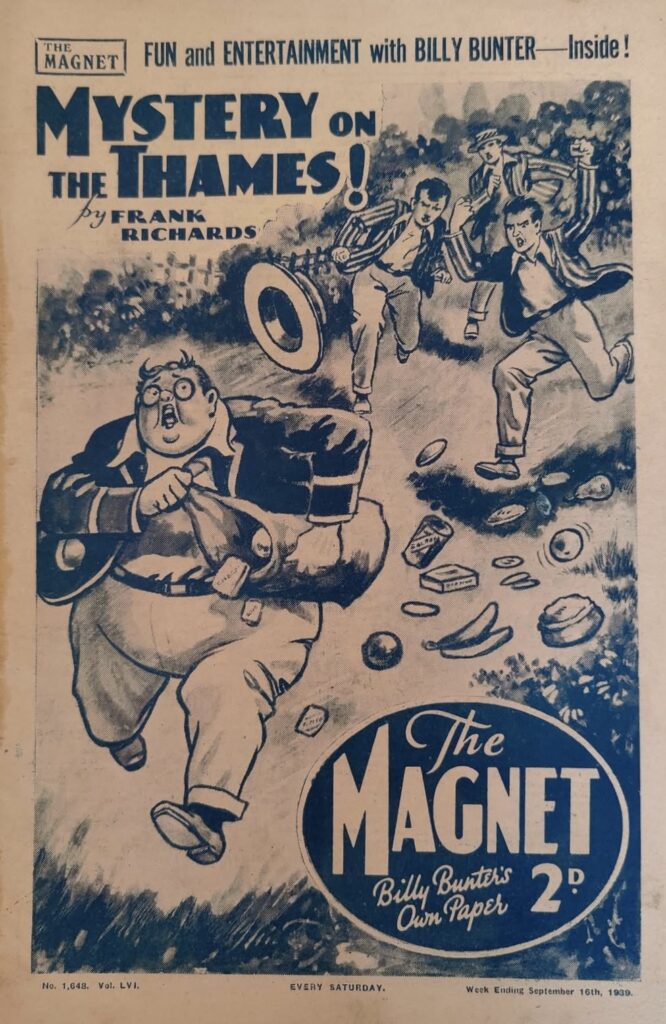
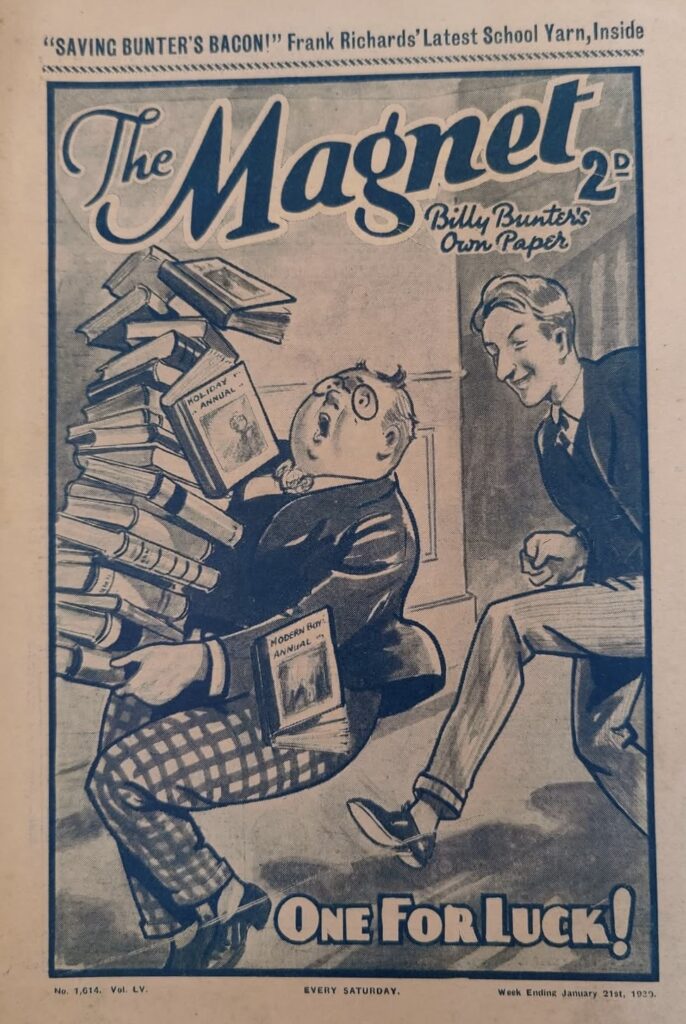
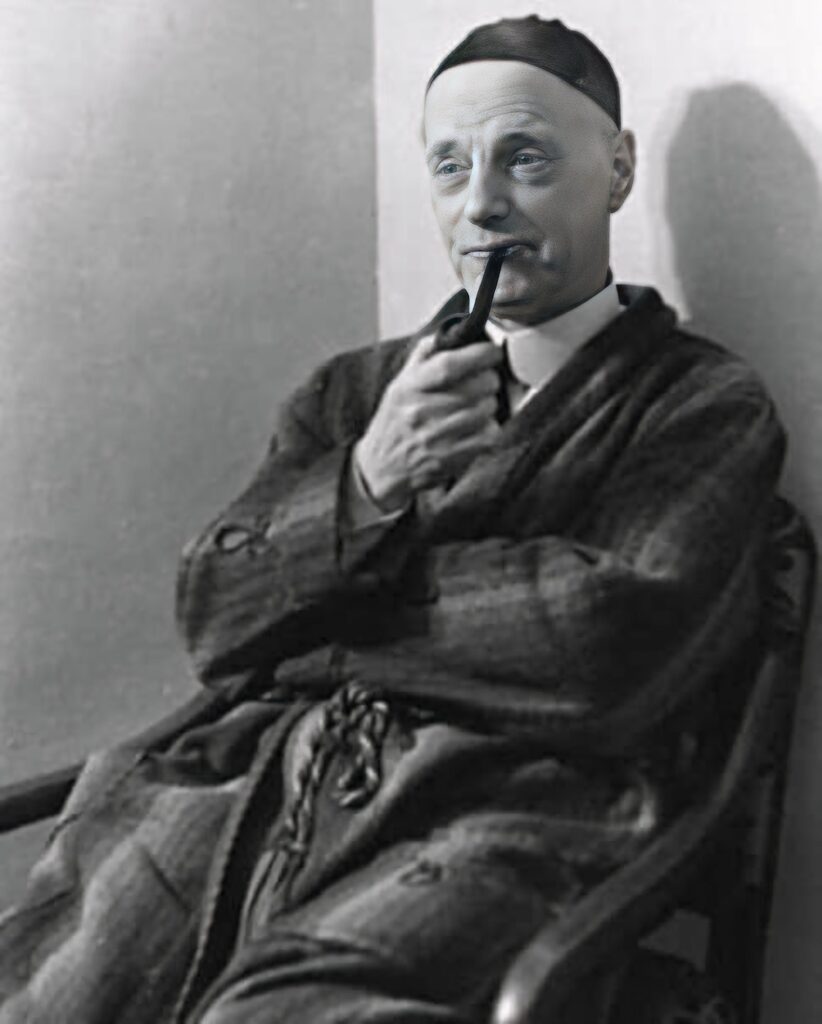
Billy Bunter, the creation of Frank Richards (the pen name of Charles Hamilton, who lived in Ealing, London), first appeared in the boys’ weekly story paper The Magnet, published by The Amalgamated Press, from 1908 to 1940, was an enduring success in Britain. The character has appeared in novels, on television, in stage plays and in comic strips, most stories set at Greyfriars School, a fictional English public school in Kent.

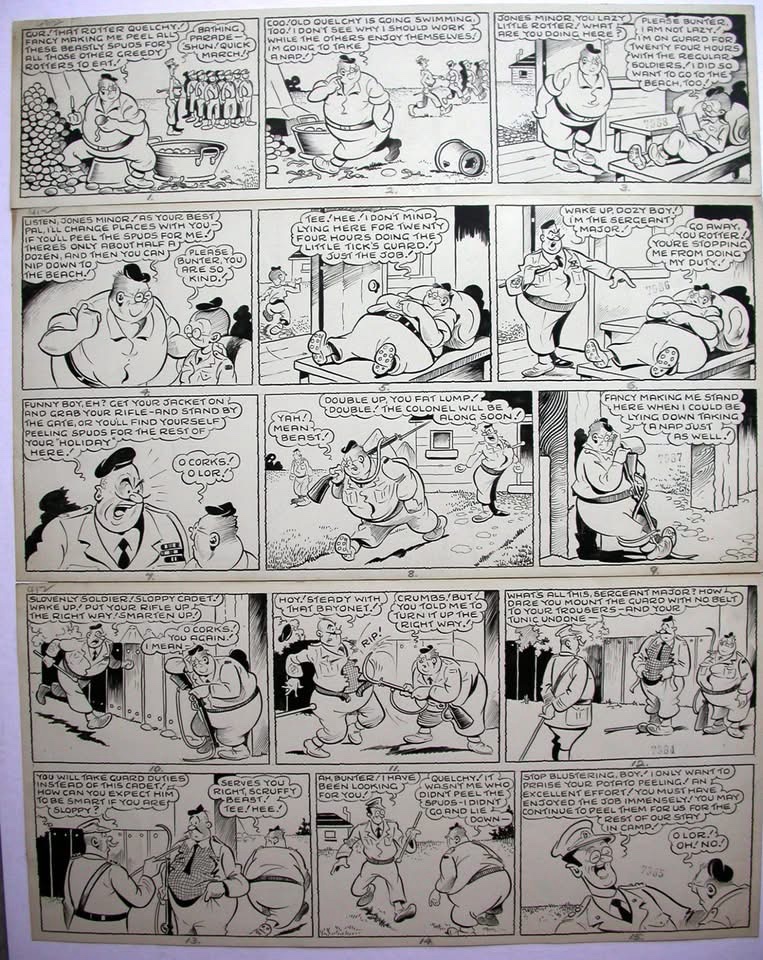
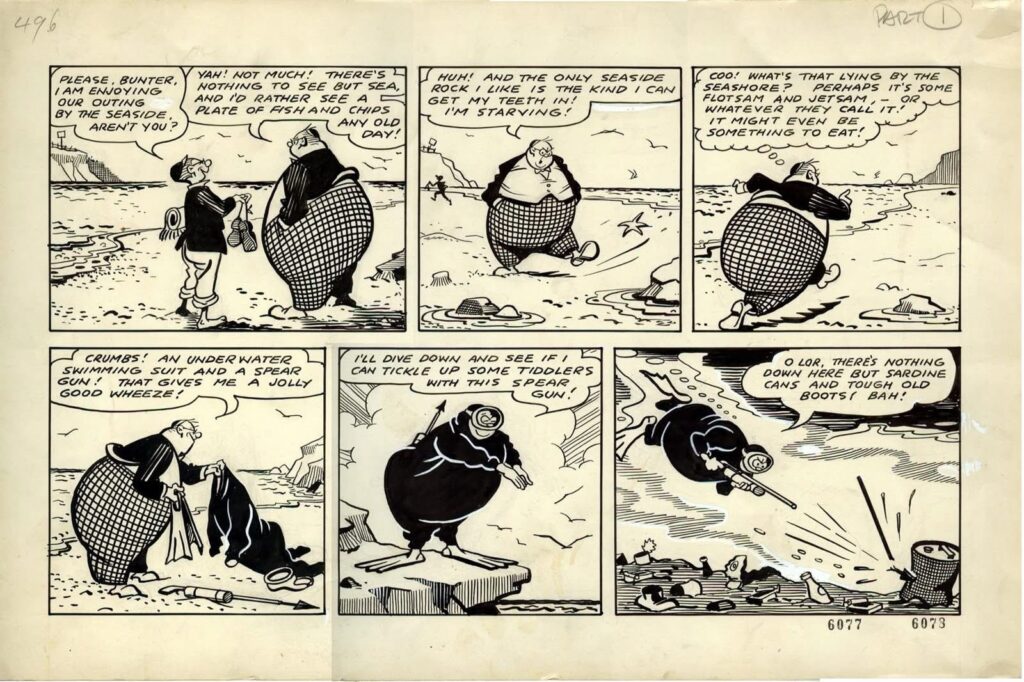
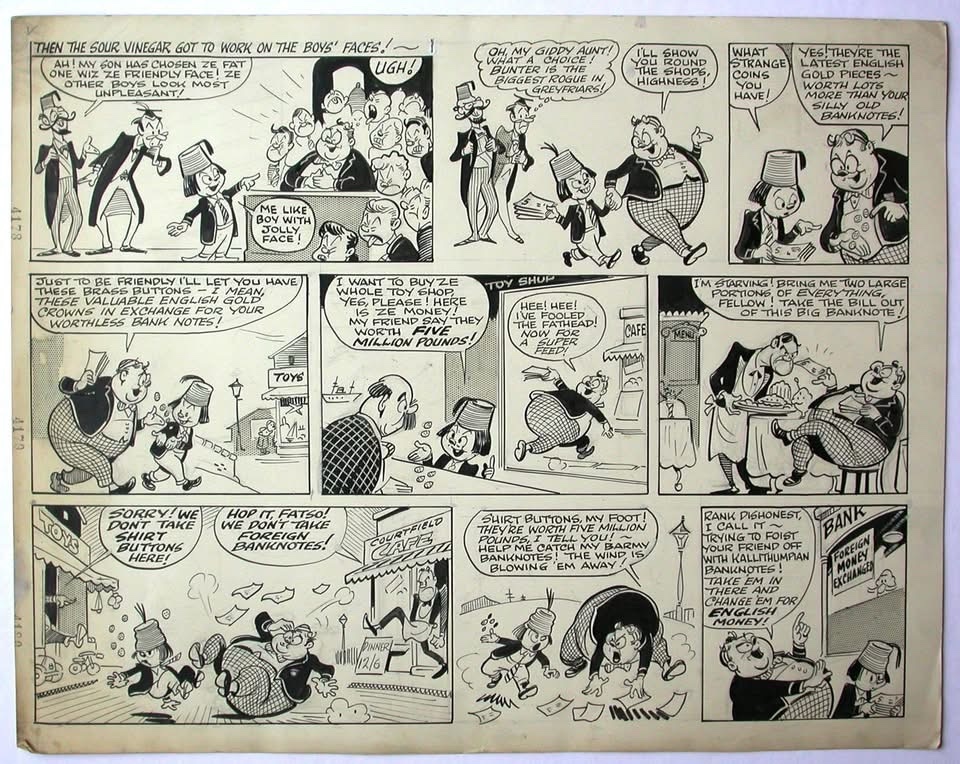
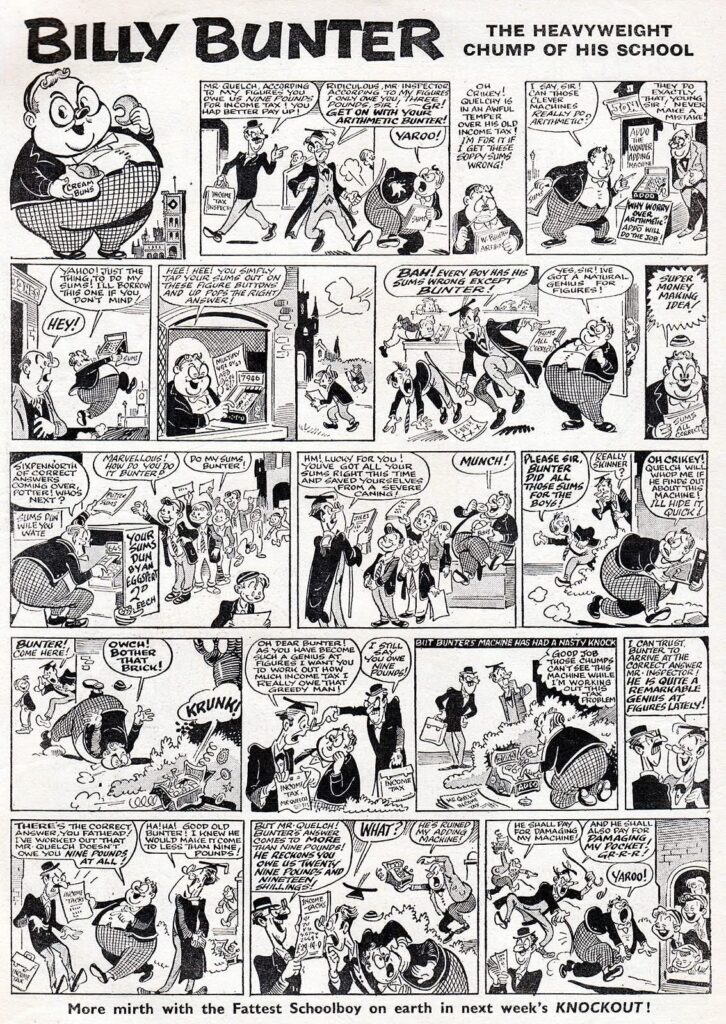
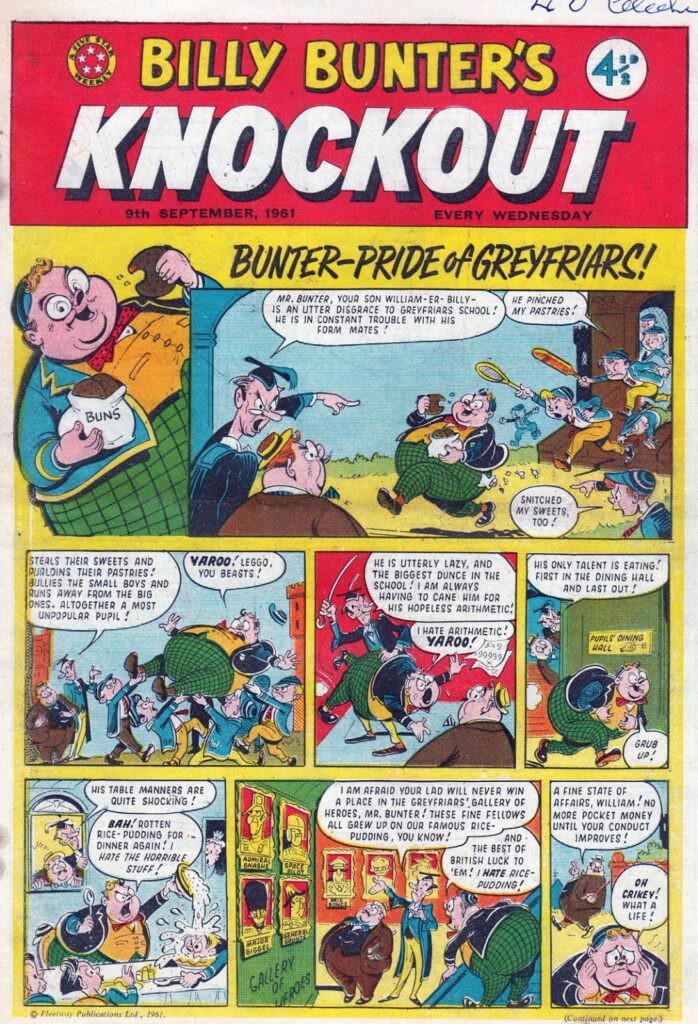

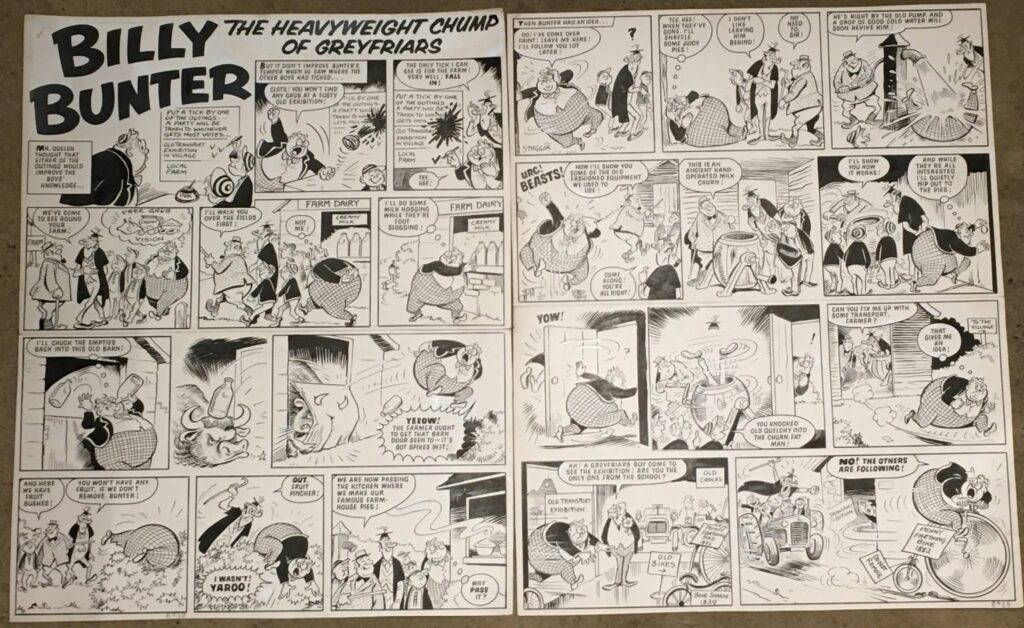
After The Magnet closed in 1940, Bunter moved to Knockout, the initial nine comic strips drawn by Charles Henry Chapman (aka CH Chapman), the last illustrator for The Magnet, followed by several other artists, including Eric Roberts, until Frank Minnitt established himself with a beaming and bouncy Bunter, drawing the strip until his death in 1958. He was followed by Albert Pease.
Reg Parlett then took over until Knockout ceased publication in 1961, when the strip transferred to Valiant, and then to TV Comic, where it ran until 1984.
Some of Parlett’s “Bunter” strips for Valiant were reprinted in the new all colour Whizzer and Chips, using yellow, magenta and green, all block colours, for its last few months before it merged into Buster, in 1990
In 1993, editor Tim Quinn led a project that looked at bringing timeless children’s favourites ‘Just William‘ and ‘Billy Bunter‘ into the Marvel UK Universe. Trial sketches were commissioned from Maureen and Gordon Gray, Lew Stringer and Dicky Howett, but the project foundered as the company’s finances began to go into free fall thanks to parent company woes in the United States.
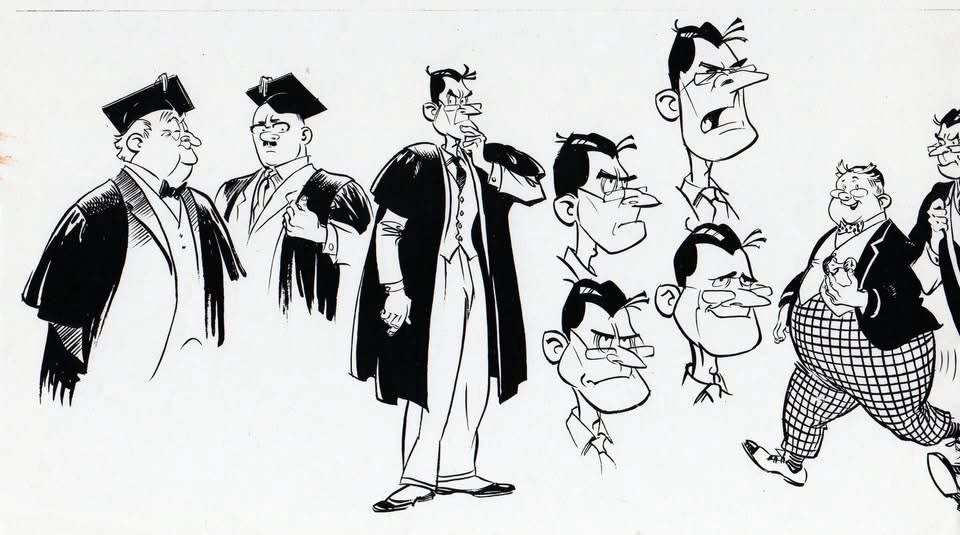
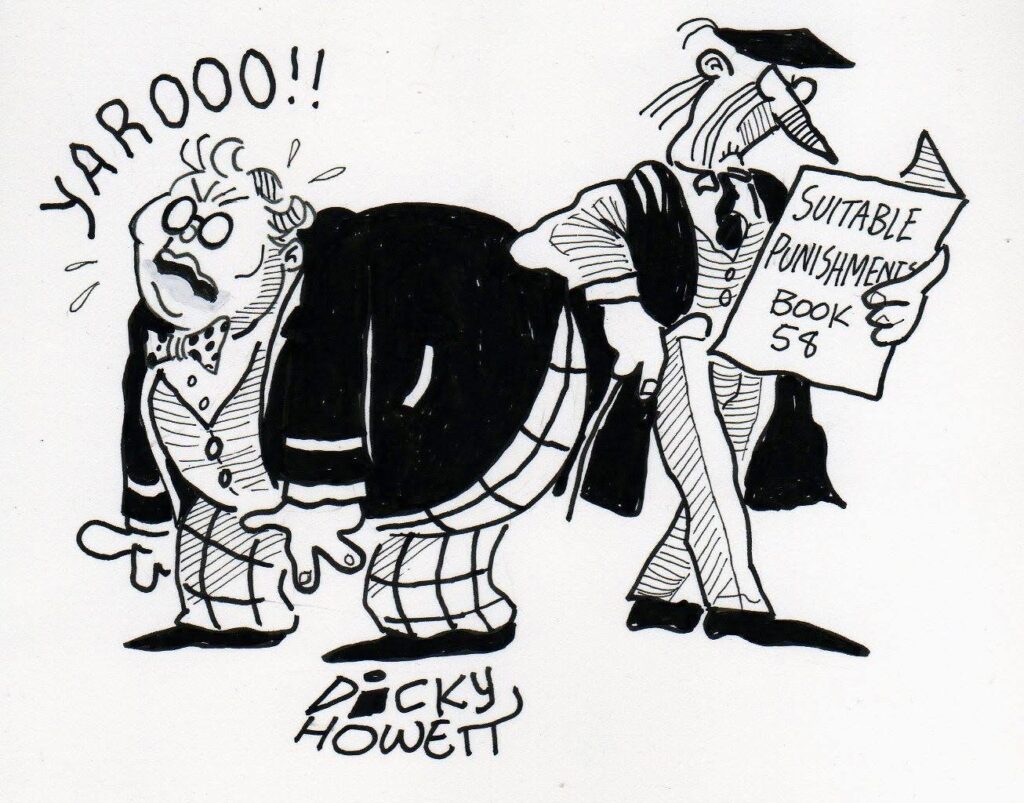
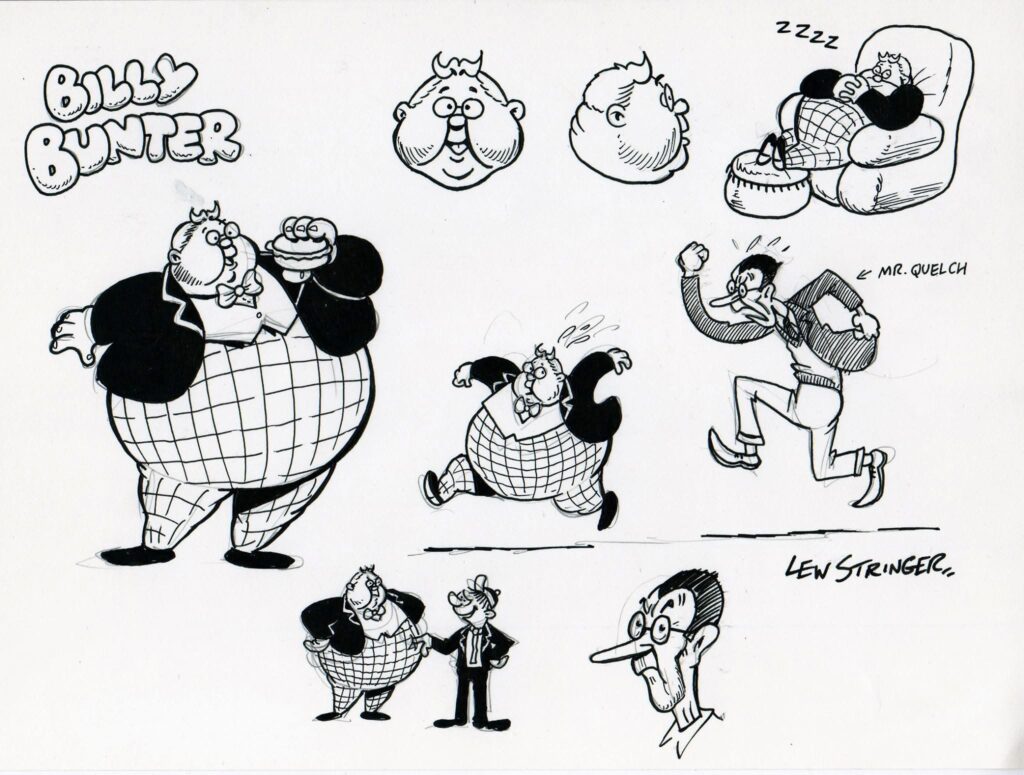
C. H. Chapman also drew a short run of Billy Bunter strips for The Comet in 1956, breaking up the picture story run of the character’s adventures in that title between March 1950 until June 1958.
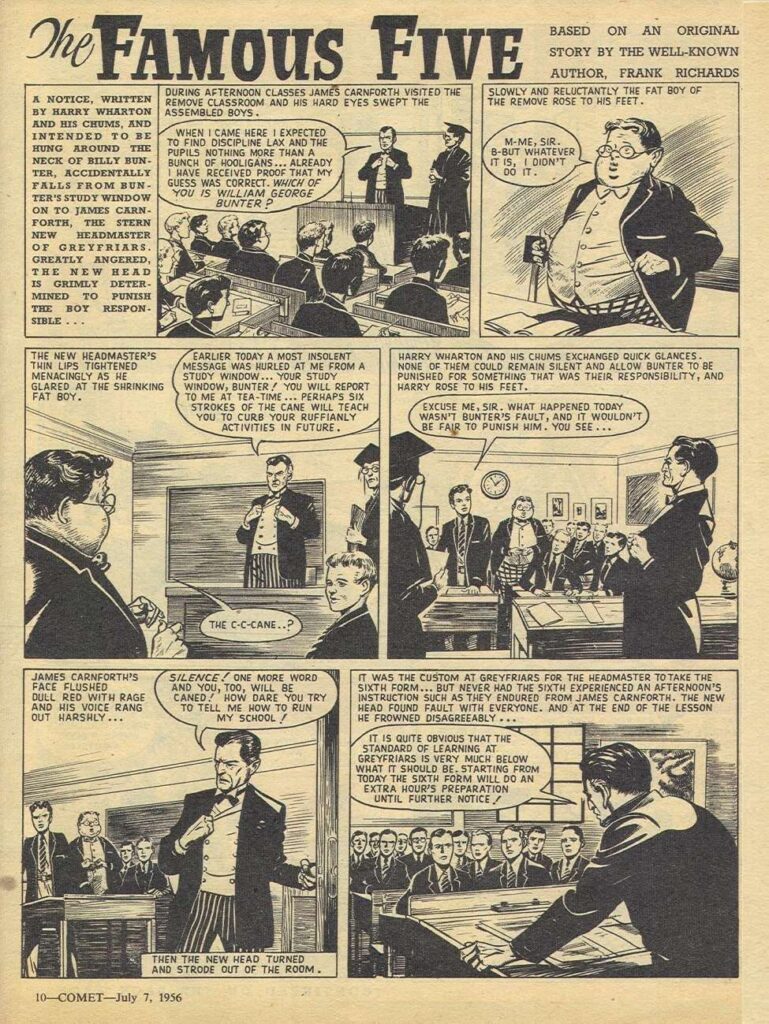

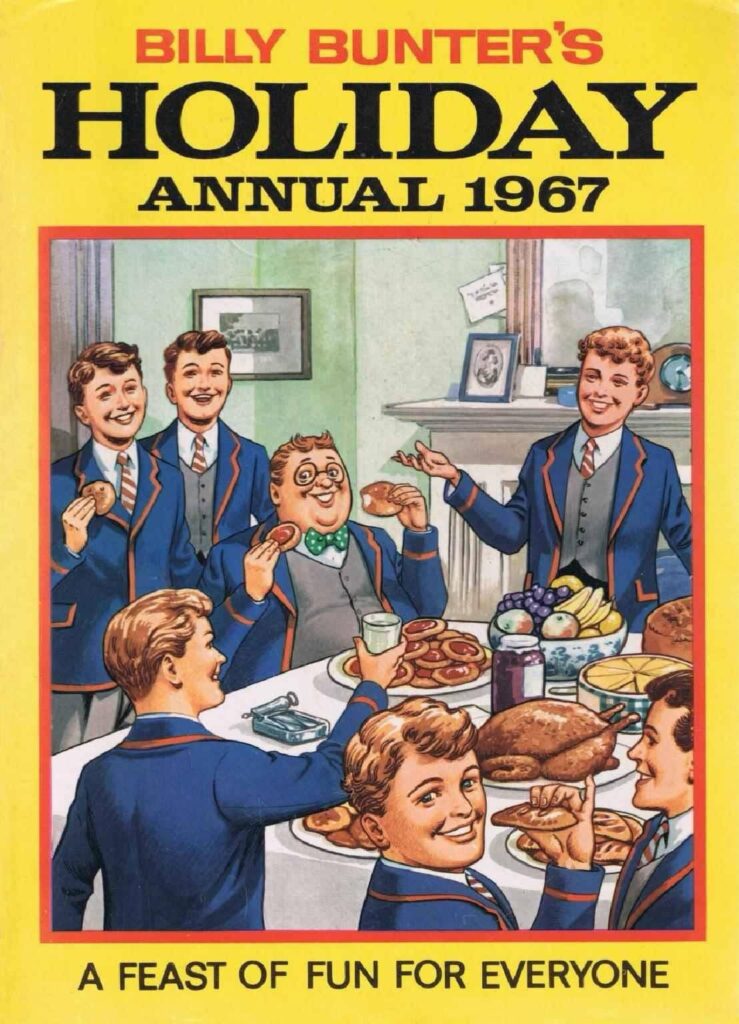
Jokes about a character based in his or her weight – Billy’s relative Bessie Bunter, who also appeared in comics, made for increasingly uncomfortable reading, all the more so in recent times. But even in 1970, when his popularity continued to be high, books about Billy Bunter, whose name were a synonym for fatness, were put among books about sex that could only be withdrawn from the children’s public library in Ipswich with special permission. Daily Express cartoonist Giles, who lived in the area, made the decision a focus of one of his cartoons, published on 15th February 1970.
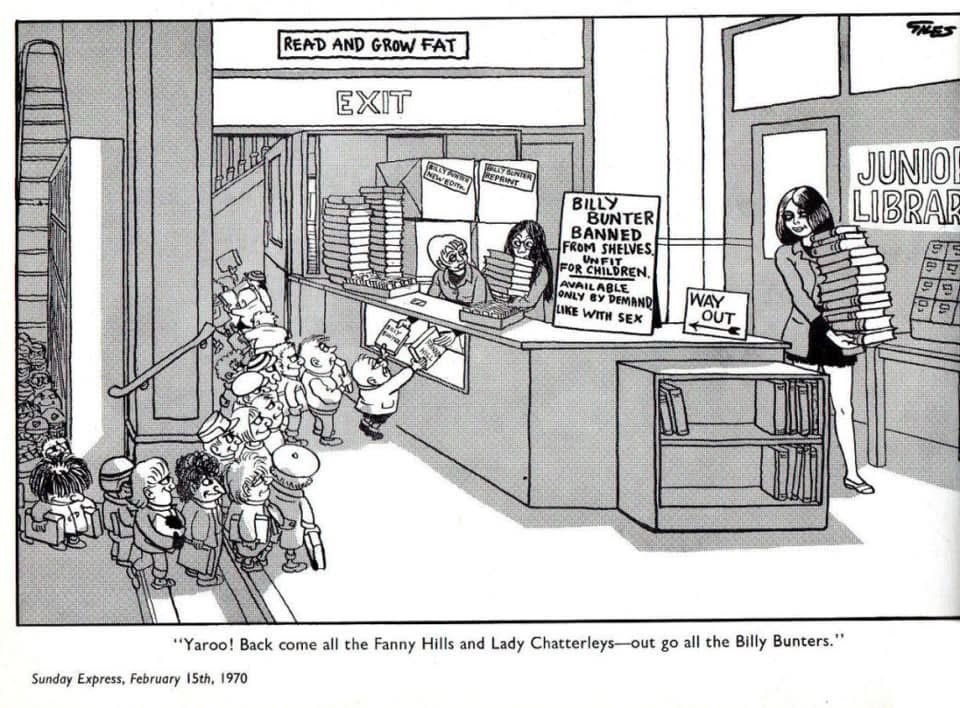
Librarian Dorothy White, 62, imposed the ban on the books because she said they encouraged schoolchildren to make fun of overweight fellow-pupils.
The Bunter books found themselves hidden behind a curtain with books like “Learning to Love” and “Where Do Babies Come From”.

Despite falling from grace as society changed, that hasn’t stopped The Daily Telegraph’s Patrick Blower, or The Guardian cartoonist Lorna Miller spoofing then Prime Minister Boris Johnson as Billy, in August 2021 and April 2022 respectively …
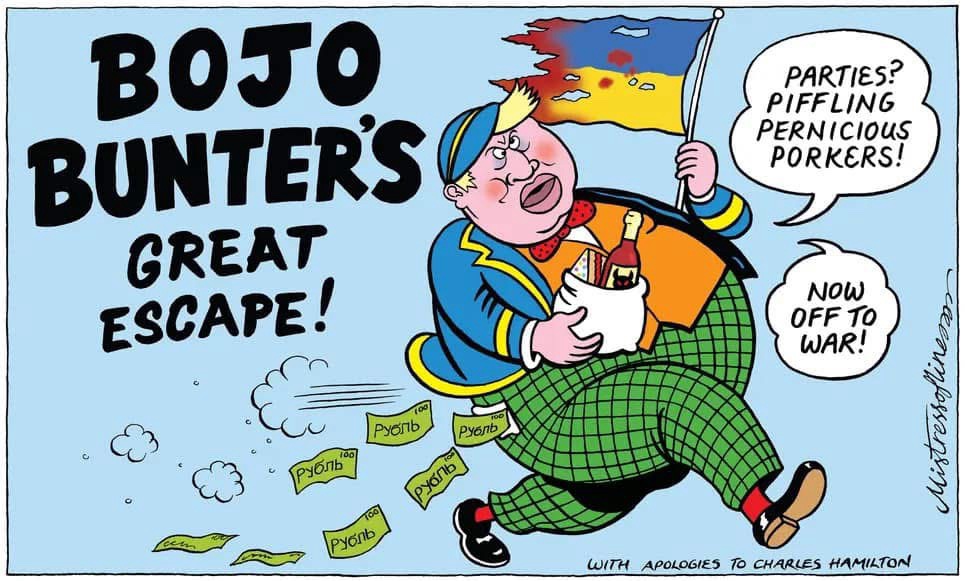
Collected Bunter!
If you’re interested in collections of Billy Bunter, comic creator Mike Higgs published The Big Fat Bunter Book in 1989, a celebratory title offering over 300 pages of material. Copies can be found at reasonable prices online, including on AmazonUK (Affiliate Link).
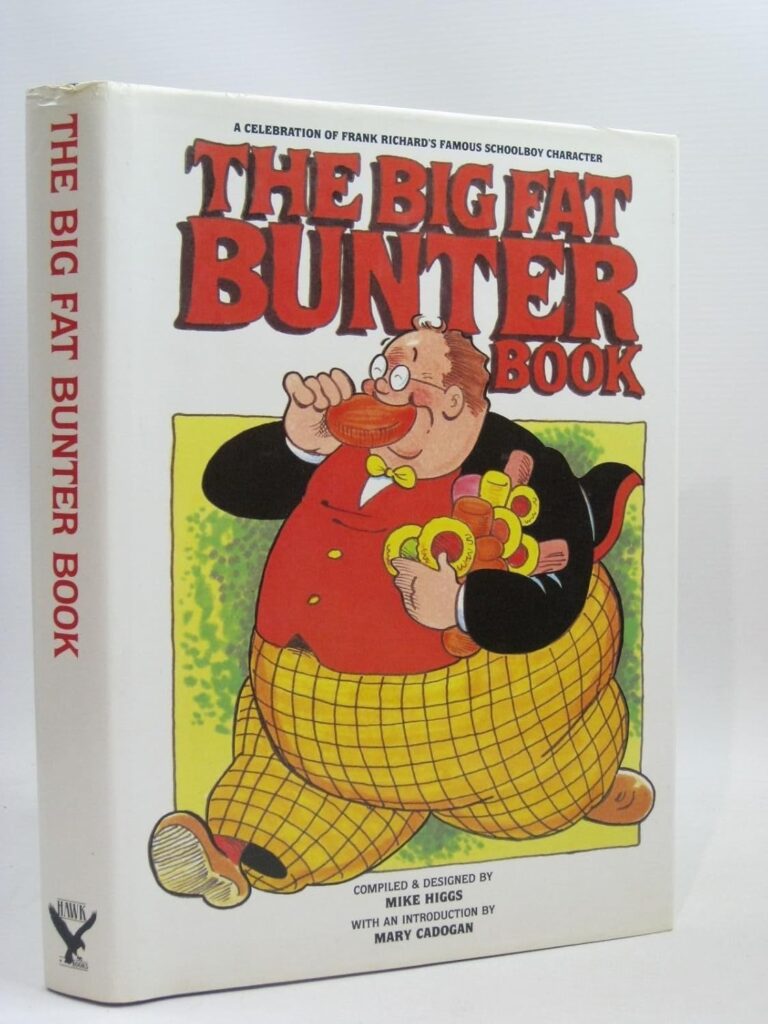
Last year, Book Palace released Billy Bunter as part of their brilliant Fleetway Comic Archives project, offering tales of Greyfriars’ “Owl of the Remove” with complete Billy Bunter comic strips from the Comet.

The collection comprises the very best of the Comet Billy Bunter dramatic strips written by Frank Richards, including all those drawn by Reg Bunn and CH Chapman, that most admirers would consider the pick of the crop, or as Billy Bunter might say, the icing on the cake: “The Famous Five” by Reg Bunn; and “Greyfriars School” and “Bunter of Greyfriars” by Charles Henry Chapman.
While the character as originally published across over a century has difficult themes today, Billy Bunter is not forgotten, and still enjoyed. Recognising changing times, many cartoonists of today skilfully avoiding vintage tropes, we salute those who created a legend!
Web Links
• Wikipedia: Billy Bunter Guide
• Friardale: A Guide to The Magnet
• Peter Gray’s UK Comics Facebook Group
• Peter Gray’s Reg Parlett Art Group
• The Magnet – Greyfriars – Billy Bunter – Frank Richards Facebook Group
• The Book Palace: Fleetway Comic Archives
The Magnet, Knockout and Valiant comics ©️ Rebellion Publishing Ltd
Categories: British Comics, Comics, Creating Comics, downthetubes Comics News, downthetubes News, Features, Flashback Corner
 2000AD’s first French outing unearthed?
2000AD’s first French outing unearthed?
Worth mentioning that some of Reg’s Bunters for Valiant were reprinted in the new all colour Whizzer and Chips (using yellow, magenta and green all block colours) for its last few months before merging into Buster.
Forgotten that! Added. Cheers
I knew BB was old, but not 1904 old: nice article!
Saw the name Reg Bunn who I know from Vulcan as a very young lad (first comic I read aged barely 4) which reprinted the brilliant Spider. I saw a Bunn Spider original on display in London’s Cartoon Museum. He could out-crosshatch the USA Image guys!